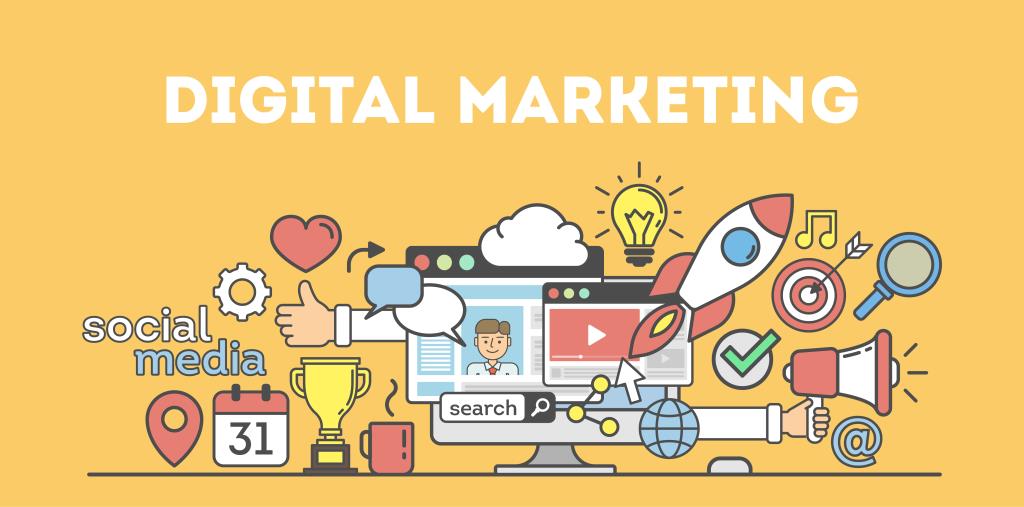
Introduction
In 2025, with over 5.4 billion internet users globally and digital platforms constantly evolving, your online presence isn’t just helpful—it’s essential. Running a business today without being online is like opening a store with no signboard. It is your main doorway to sales, customers, and growth. Whether you own a boutique, a startup, or a consulting firm, being online helps you stay competitive, reach a wider audience, and increase your profits.
The truth is, most of your customers are searching, scrolling, and shopping online. So, if your business isn’t there, you’re missing out on real opportunities to grow.
But where do you begin if you’re not a tech expert? This guide breaks down digital marketing in simple terms and shows you how to use it to get real results—more visibility, more leads, and more sales.
What is Digital Marketing?
Digital marketing is the art of using the internet and online tools to promote your brand, attract new customers, and build lasting relationships.
It includes everything from showing up on Google, running ads on Facebook, sending email campaigns, posting on Instagram, to building a user-friendly website. Unlike traditional marketing, which relies on TV, radio, or billboards, digital marketing allows you to:
- Show your brand to the right people
- Know what’s working and what’s not working in your business
- Develop and grow your business on a larger scale
- Reach and serve your customers anytime, anywhere
6 Core Components of Digital Marketing
A strong digital marketing strategy is built on several interconnected pillars. Here are the six core components every business should understand:
- Search Engine Optimization (SEO)
- Social Media Marketing (SMM)
- Pay-Per-Click Advertising (PPC)
- Email Marketing
- Content Marketing
- Website Design & User Experience (UX)
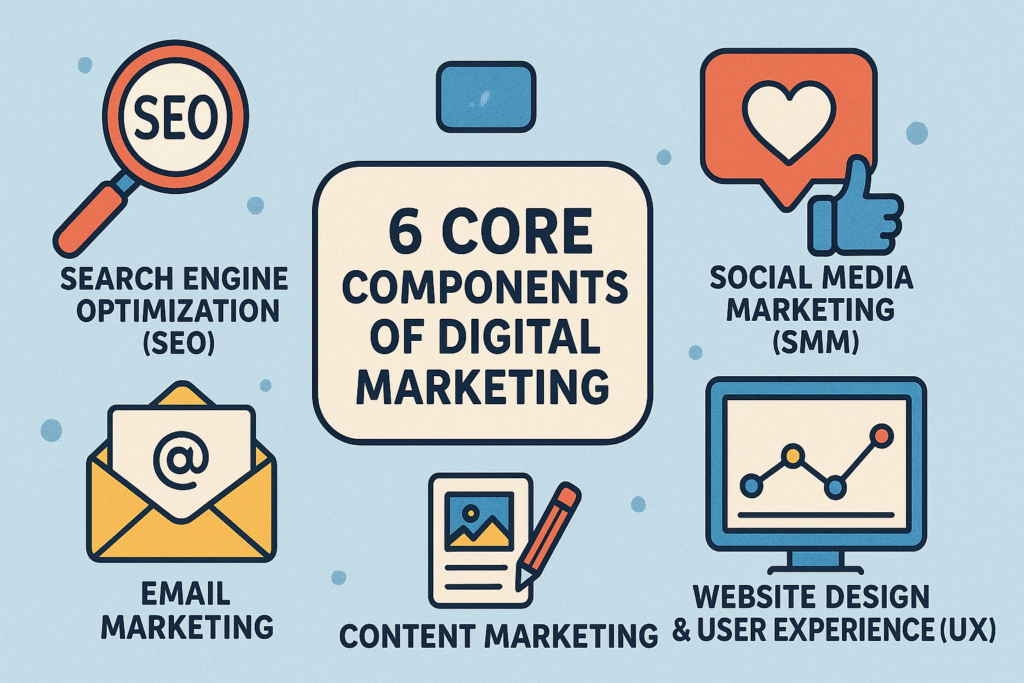
Let’s explore each of these components and their features:
Search Engine Optimization (SEO)
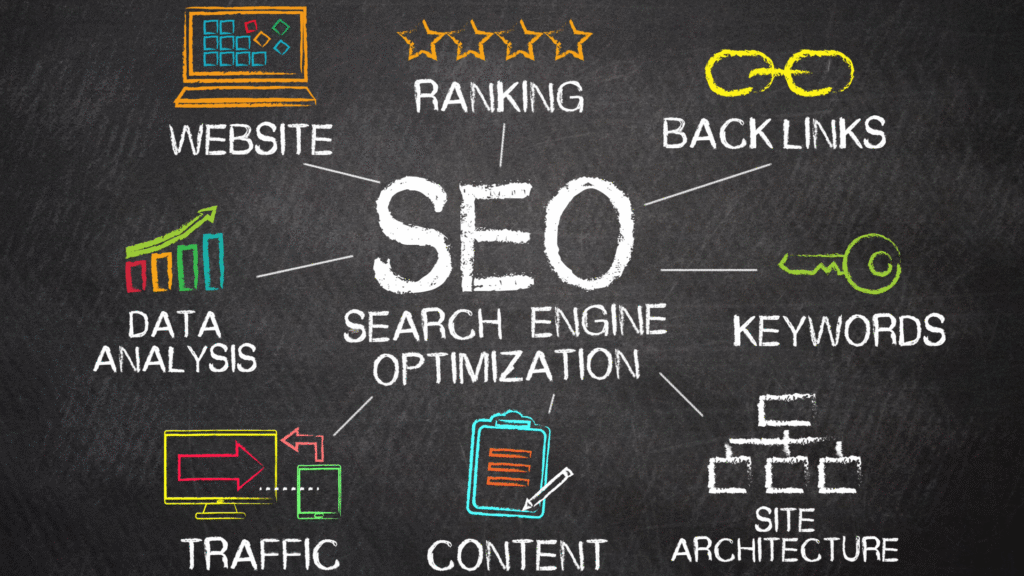
What is it?
SEO is the process of making your website visible on search engines like Google. When someone types in a keyword related to your business, you want your site to appear near the top of the results. It includes using the right keywords, fast-loading pages, mobile-friendly design, and getting other sites to link to you.
Features:
- Uses keywords people are searching for
- Improves site speed and mobile responsiveness
- Builds authority through backlinks
- Targets both global and local search
Why it matters?
It brings in organic (free) traffic without paying for ads. It’s long-term, cost-effective, and essential for online credibility.
Social Media Marketing (SMM)
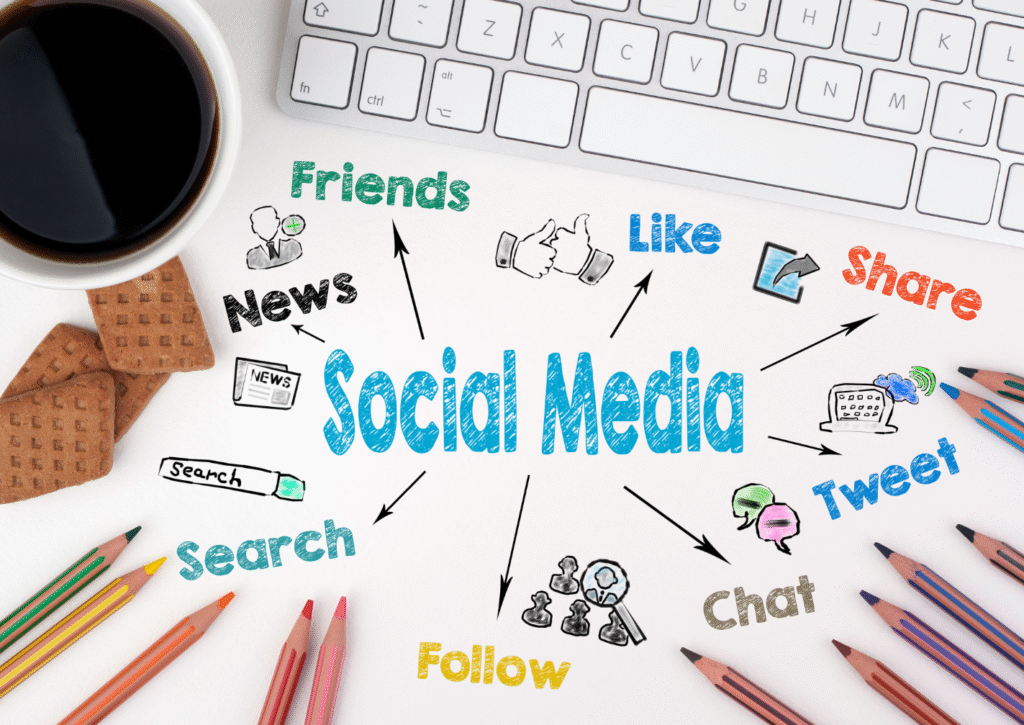
What is it?
This involves using platforms like Instagram, Facebook, LinkedIn, and TikTok to promote your business and interact with your audience. It’s about creating fun, engaging, or educational posts that build a community and drive traffic to your website.
Features:
- Builds brand awareness and engagement
- Includes both organic posts and paid promotions
- Great for storytelling, feedback, and community building
- Helps humanize your brand
Why it matters?
Over 4.8 billion people use social media globally in 2025. It’s where your audience hangs out and discovers new brands.
Pay Per Click (PPC) Advertising
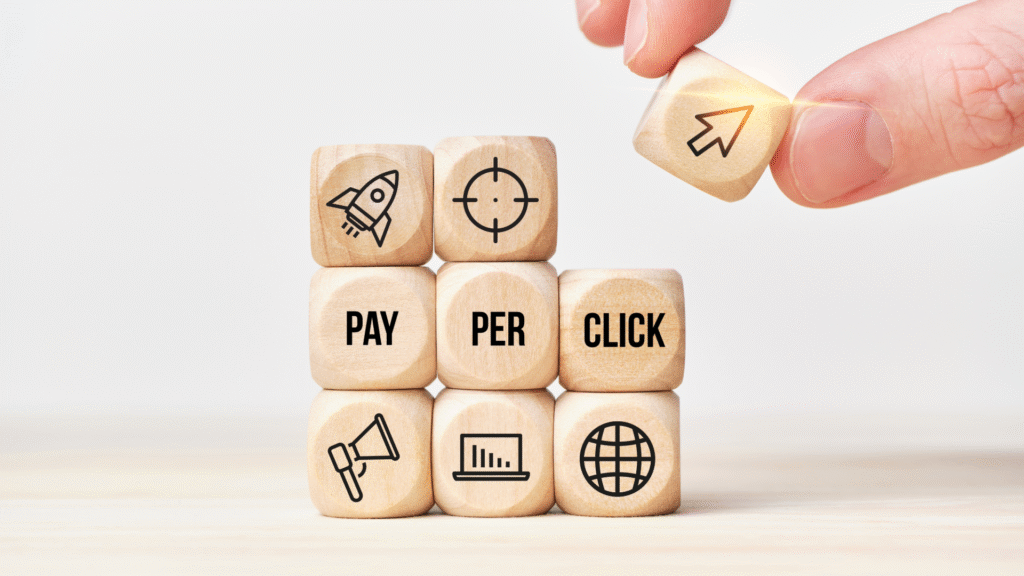
What is it?
PPC lets you place ads on platforms like Google Ads or Facebook, and you pay only when someone clicks on them. These ads show up on Google search results or social media feeds. It’s a great way to quickly attract potential customers who are already searching for what you offer.
Features:
- Instant visibility and fast results
- Target specific keywords, interests, or locations
- Control over your budget and see clear results
- Ideal for time-sensitive offers or new launches
Why it matters?
PPC can quickly drive traffic and sales, especially for new businesses trying to gain traction.
Email Marketing
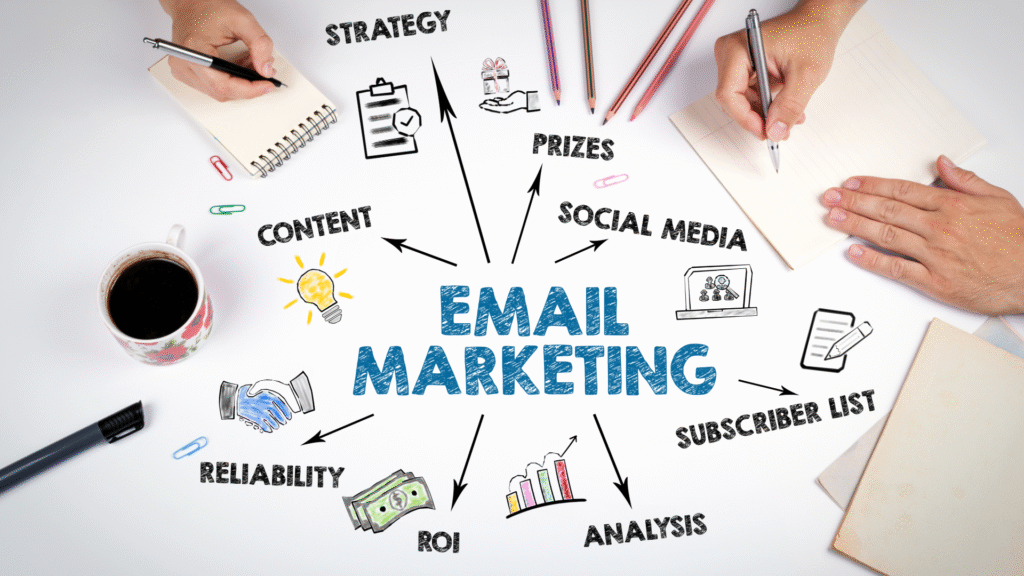
What is it?
A direct way to communicate with your audience via email. It is often used to announce offers, share tips, or update them about your services. With automation, you can send the right email at the right time and keep customers engaged.
Features:
- Automated welcome emails and reminders
- Customer Segmentation for personalized content
- Send special offers and discounts to boost purchases
- Helps build long-term relationships
Why it matters?
It keeps your audience informed, engaged, and coming back — all while staying in control of your communication.
Content Marketing
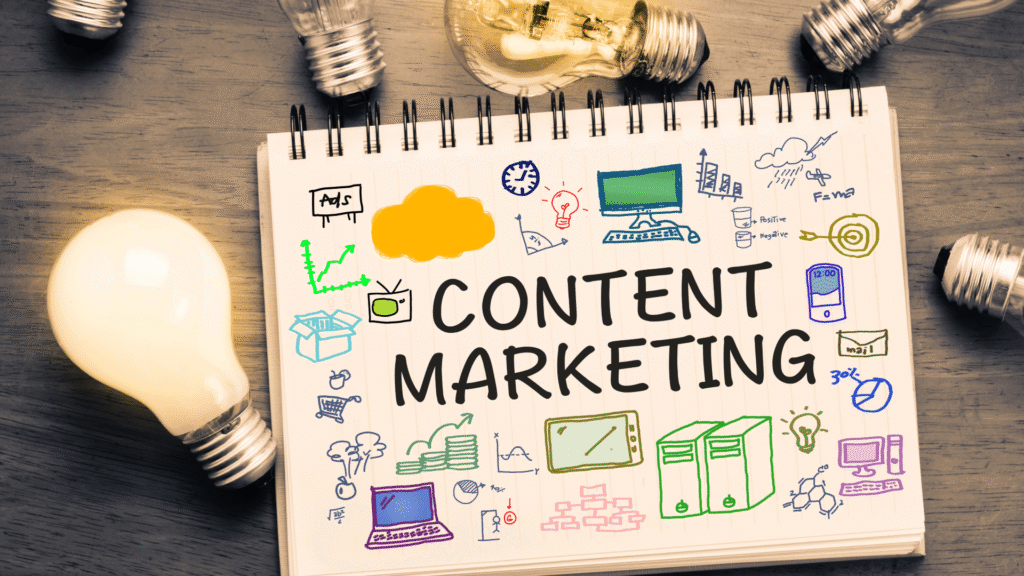
What is it?
This is about creating and sharing valuable, relevant content to attract and educate your audience. It includes blog posts, videos, eBooks, and infographics that help your audience solve problems.
Features:
- Educate and inform target audience about products and services
- Builds trust without directly selling
- Supports SEO and drives traffic
- Positions your brand as a leader
Why it matters?
“Content is king.” Businesses that blog get 67% more leads than those that don’t.
Website Design & User Experience (UX)
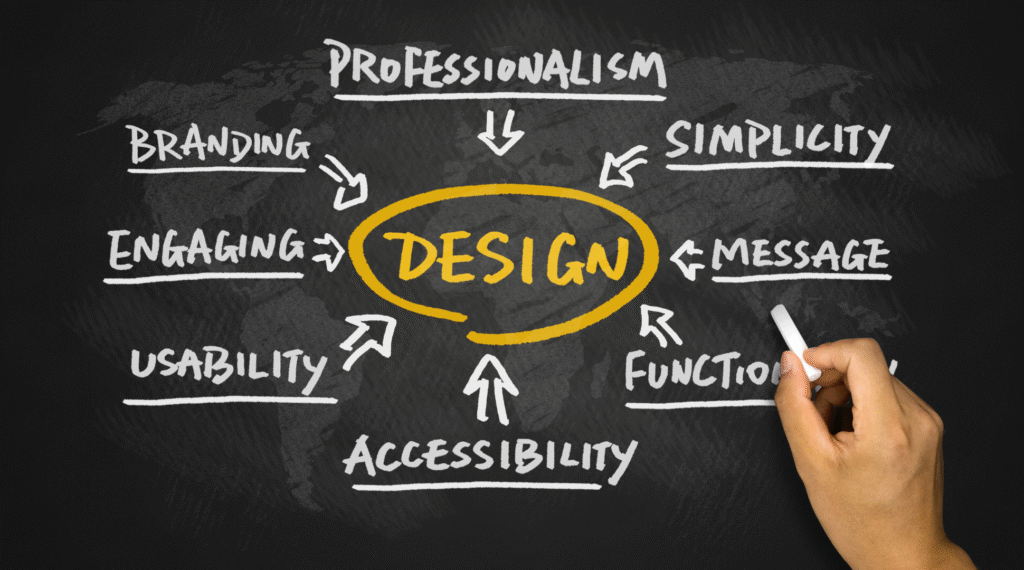
What is it?
Your website is your digital headquarters. UX focuses on how users interact with your site. A great website is fast, easy to navigate, and looks good on all devices. Good UX makes visitors feel comfortable and encourages them to take action.
Features:
- Clean design and easy navigation
- Mobile responsiveness and fast loading
- Clear Calls-to-Action (CTAs)
- Trust-building elements like reviews and certifications
Why it matters?
A good user experience can increase conversions by up to 200%, while a poor one drives visitors away instantly.
Why Is Digital Marketing Important in 2025?
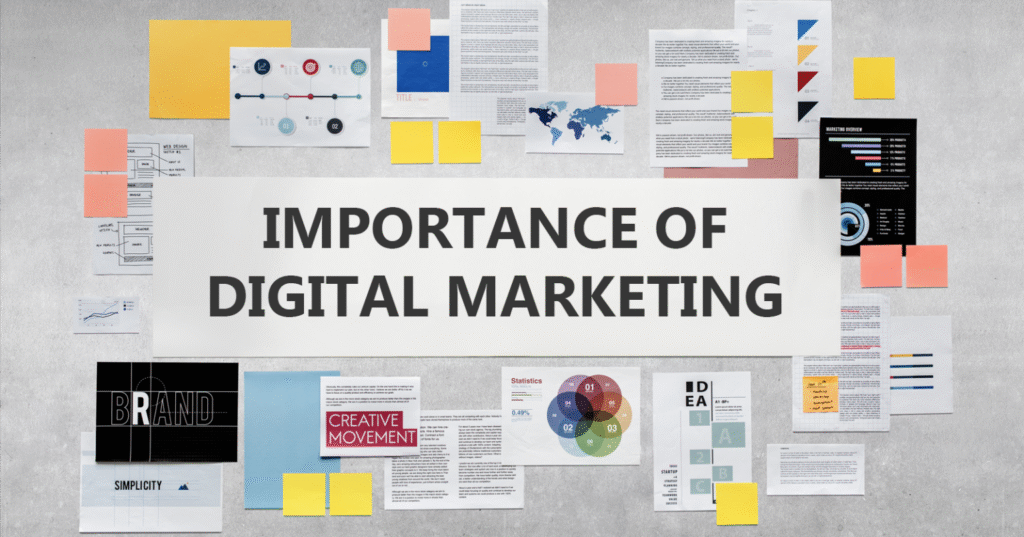
- According to the data from PowerReviews and other sources it indicates that 95% of consumers read reviews before buying.
- Over 70% of small businesses invest in digital marketing.
- AI and automation help small brands compete with big players.
- Mobile devices account for over 60% of all online searches.
- Online visibility is essential—if you’re not digital, you’re invisible to most.
- Digital platforms allow you to connect with customers 24/7.
- Data analytics helps you track what’s working and optimize campaigns.
- Personalized marketing improves conversion rates and customer satisfaction.
In today’s competitive market, having a strong digital presence helps you stand out, build trust, and drive sales effectively.
Beginner-Friendly Tips to Get Started
- Define Your Goals: Want more leads, traffic, or brand awareness? Clear goals = clear strategies.
- Know Your Audience: Who are they? Where do they hang out online? What are their problems?
- Pick the Right Channels: You don’t have to be everywhere. Start with 1-2 platforms that suit your audience.
- Create Quality Content: Blog posts, how-to videos, infographics – solve problems, don’t just sell.
- Track and Adjust: Use tools like Google Analytics and Meta Insights to measure what’s working.
Pro Tip: Start small. Focus on building a solid online presence with a well-optimized website and one social media channel. As you grow, expand your strategy with email campaigns, paid ads, and more detailed content planning.
Conclusion
In 2025, digital marketing is dynamic, data-driven, and full of opportunities for businesses of all sizes. It may seem overwhelming at first, but by starting small, being consistent, and staying customer-focused, your business can thrive in the digital world.
With the right digital marketing approach, you can draw in the right audience, create a lasting impression, keep them engaged, and turn interest into action — faster than ever before.
We get it — navigating the digital space for the first time can feel like a lot. But the good news? You don’t have to do it alone.
At Flowskape, we simplify digital marketing for growing businesses. Whether you need help with branding, websites, content, or campaigns — we’ll handle the strategy and execution while you focus on running your business with confidence.
